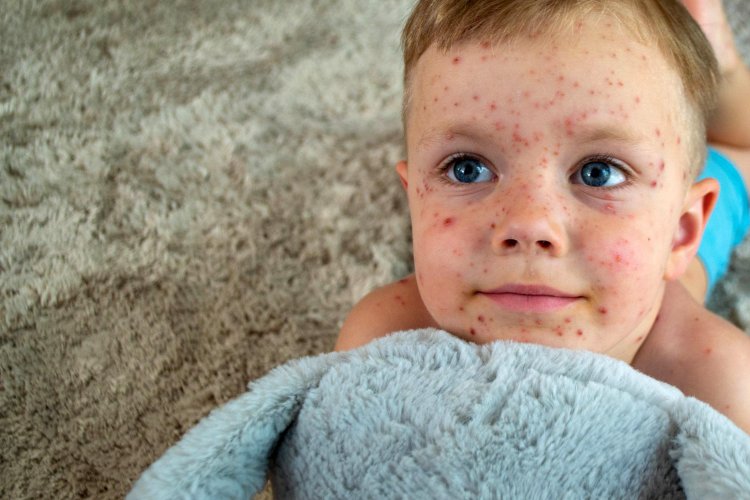A Closer Look at Common Childhood Viral Infections: Fifth and Sixth Diseases Decoded
In the realm of pediatric health, certain illnesses stand out due to their distinct characteristics and prevalence among children. Among these are the Fifth Disease (Erythema Infectiosum) and the Sixth Disease (Roseola Infantum), both of which are commonly encountered in pediatric practice. Understanding the features, differences, diagnostic approaches, treatment modalities, and precautions associated with these diseases is essential for parents, caregivers, and healthcare professionals alike.

Fifth Disease (Erythema Infectiosum)
Overview
Fifth Disease, also known as "slapped cheek disease," is caused by the human parvovirus B19. It primarily affects children aged 5 to 14 but can occur in individuals of any age. The disease is named for being the fifth on a historical list of common childhood rashes.
Symptoms
-
Initial Phase: Fifth Disease often starts with nonspecific symptoms such as low-grade fever, headache, sore throat, and malaise. These symptoms may last for a few days and can mimic those of a mild cold or flu.
-
Characteristic Rash: One of the hallmark features of Fifth Disease is the appearance of a distinctive rash, which typically begins on the cheeks, giving the appearance of a "slapped cheek." This rash may spread to other parts of the body, including the trunk and limbs, in a lace-like or net-like pattern. The rash is usually not itchy and may come and go for several weeks, particularly in response to changes in temperature or sunlight exposure.
Diagnosis
Diagnosing Fifth Disease is often based on clinical presentation, particularly the characteristic rash. However, laboratory tests such as serology (testing for antibodies against parvovirus B19) or PCR (polymerase chain reaction) may be performed to confirm the diagnosis, especially in cases where the presentation is atypical or in immunocompromised individuals.
Treatment
There is no specific antiviral treatment for Fifth Disease, as it is usually a self-limiting illness. Management primarily focuses on relieving symptoms and providing supportive care. This may include:
-
Fever Management: Over-the-counter medications such as acetaminophen or ibuprofen may be used to reduce fever and alleviate discomfort.
-
Hydration: Encouraging adequate fluid intake is important, especially if fever is present.
-
Rest: Rest is essential for recovery and may help reduce the duration of symptoms.
Precautions
-
Fifth Disease is most contagious before the onset of the characteristic rash. Therefore, individuals with symptoms suggestive of Fifth Disease, particularly children, should avoid close contact with pregnant women and individuals with weakened immune systems.
-
Practicing good hand hygiene, covering coughs and sneezes, and avoiding sharing personal items can help prevent the spread of the virus.
Sixth Disease (Roseola Infantum)
Overview
Roseola Infantum, also known as exanthema subitum or "three-day fever," is a viral illness primarily caused by human herpesvirus 6 (HHV-6) and, less commonly, by human herpesvirus 7 (HHV-7). It primarily affects infants and young children under the age of 2, with peak incidence occurring between 6 and 15 months of age.
Symptoms
-
Prodromal Phase: Roseola typically begins with a sudden onset of high fever, often exceeding 103°F (39.4°C). The fever may persist for several days and is often accompanied by irritability, decreased appetite, and mild upper respiratory symptoms.
-
Rash: Once the fever resolves, usually after 3 to 5 days, a distinctive rash may appear. This rash typically starts on the trunk and spreads to the neck, face, and extremities. It consists of small, pink, raised spots or patches and is typically not itchy or uncomfortable.
Diagnosis
Diagnosing Roseola Infantum is primarily clinical, based on the characteristic sequence of symptoms: high fever followed by the appearance of the rash once the fever resolves. Laboratory tests, such as PCR for HHV-6 or HHV-7, may be performed in certain cases to confirm the diagnosis, particularly in immunocompromised individuals or when the clinical presentation is atypical.
Treatment
Similar to Fifth Disease, there is no specific antiviral treatment for Roseola Infantum, as it is usually a self-limiting illness. Management primarily focuses on relieving symptoms and providing supportive care, including fever management and ensuring adequate hydration.
Precautions
-
Roseola Infantum is highly contagious, especially during the febrile phase when the virus is actively shed. Therefore, close contact with susceptible individuals, particularly infants and young children, should be minimized until the fever resolves.
-
Practicing good hand hygiene, avoiding close contact with individuals who are sick, and disinfecting frequently touched surfaces can help prevent the spread of the virus.
Distinguishing Features
While Fifth Disease and Roseola Infantum share some similarities, they also have distinct features that can aid in differentiation:
-
Age of Onset: Fifth Disease typically affects older children, while Roseola Infantum primarily affects infants and young children under the age of 2.
-
Symptom Sequence: Fifth Disease is characterized by the appearance of the rash early in the illness, whereas Roseola Infantum presents with a high fever followed by the rash once the fever resolves.
In conclusion, Fifth Disease and Roseola Infantum are common childhood viral illnesses that are usually self-limiting and resolve without complications. However, understanding their distinctive features, diagnostic approaches, and management strategies is essential for parents, caregivers, and healthcare professionals. By recognizing the symptoms, practicing preventive measures, and seeking appropriate medical care when needed, the impact of these illnesses can be minimized, and complications can be prevented.
#FifthDisease #RoseolaInfantum #ChildhoodIllnesses #ViralInfections #Healthcare #Parenting #PreventiveCare #MedicalKnowledge #Pediatrics #HealthyKids
Disclaimer:
The information provided in this article is for educational purposes only and should not be considered medical advice. If you have any health concerns or are experiencing symptoms, it is important to consult with a healthcare professional, such as a doctor or clinic, for proper diagnosis and treatment. Always seek the advice of your doctor or other qualified health provider with any questions you may have regarding a medical condition. Do not disregard professional medical advice or delay in seeking it because of something you have read in this article.
What's Your Reaction?





















